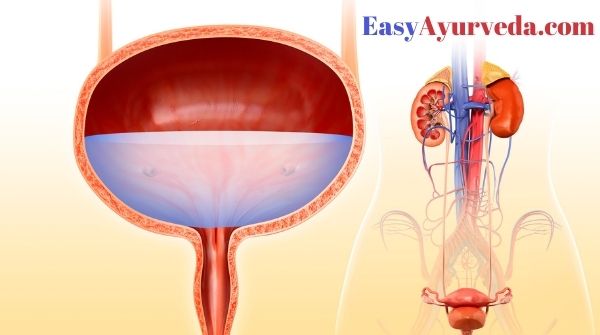Mutravaha Srotas Description, Vitiation Symptoms, Treatment
By Dr Raghuram Y.S. MD (Ay)
Mutravaaha srotas – Combining the views of master Charaka and Sushruta, the roots of channels carrying urine includes most structures of the urinary system, the ureters, the penis / urethra and urinary bladder. The pathway of excretion of urine has been explained as roots of transportation of urine. Mutra = urine, Vaha = carrying, Srotas = channels of transportation or conveyance
Read – Srotas: Body Channels and Duct systems – Easy Explanation

Table of Contents
Introduction
Mutra Vaha Srotas – Channels of transport of urine
According to Sushruta –
a. Roots of the channels
The channels carrying urine are two in number. They have their roots in –
- Vasti – Urinary bladder
- Medhra – Penis / urethra to be precise as it also covers the female part of urine excretion too
b. Symptoms of injury to urine carrying channels
- Aanadda vasti – expansion / dilatation of urinary bladder
- Mutra nirodha – obstruction to urination
- Stabdha medhrataa – erection of penis and sustenance of erection
According to Charaka –
a. Roots of the channels
The roots of urine carrying channels are located in –
- Vasti – Urinary bladder
- Vankshana – groins or loins / Ureters
b. Symptoms of vitiation of urine carrying channels –
- Ati-srushtam – excessive urination
- Ati-baddham – scanty urination
- Prakupitam – obstructed urination
- Alpam alpam – frequent urination
- Bahalam – urine is thick or excess in quantity
- Sashulam – painful urination
Read – Amla Home Remedy For Frequent Urination – Prepare It Within A Minute
Causes for vitiation
Mutravaha Srotodusti karana:
Mootrita udaka bhakshya stree sevanaat – Drinking water, taking food and having sex in the presence of urge for urination – as a rule, urine should be voided before eating, drinking or having sex, all these will impart pressure on the urinary bladder and on long run will contaminate the channels transporting urine
- Mutra nigrahaat – habit of holding the urge of voiding urine
- Ksheena – emaciation
- Abhikshata – injury or damage to the passages carrying urine
Treatment
The vitiation of channels transporting urine should be managed on the lines of treatment of Mutrakruchra – dysuria
Read – Dysuria: Causes, Remedies, Tips, Diet, Ayurvedic Treatment
Sanskrit Verses

Analysis
Mootravaha srotas – urine carrying channels roots
The roots –
a. Ureters as root of urine carrying channels – Urine is formed by the kidneys. This urine is brought to the urinary bladder by ureters which are tubular structures which start from the lower end of the kidneys and open into the urinary bladder.
b. Urinary Bladder as root of urine carrying channels – The urinary bladder stores the urine until it is filled up and can create sufficient pressure so as to expel it. Once the urinary bladder fills up, it imparts pressure on the lower sphincters and the urine is pushed into the urethra.
c. Urethra as root of urine carrying channels – Urethra is a tubular structure which starts from the lower end of the urinary bladder and end by opening at the tip of the penis in men and in the vulva in the women. It carries the urine to be voided from the urinary bladder and expels it out of the body.
Read – Urine In Ayurveda – Functions, Importance, Pathology, Treatment
Analysis of symptoms
Mootravaha srotodushti – analysis
Expansion of urinary bladder indicates laxity of urinary bladder caused due to continued habit of withholding the urinary urge. This, on long run leads to incontinence of urine. Obstructed, scanty, excessive and frequency of urination are all the consequences of laxity of bladder or atonic bladder. Increased expansion of bladder and consequent laxity will make the sphincters weak, leading to incontinence, frequency and excessive urination.
Excessive urination also indicates excessive formation of urine. This happens due to excessive formation of kleda i.e. moisture and fluidity in the body due to kapha increase.
Thick, turbid urine indicates improper filtration mechanism in the kidneys.
Pain in the penis and sustained erection is a result of vata aggravation in the urinary system and in the genitals.
Click to Consult Dr Raghuram Y.S. MD (Ayu)








